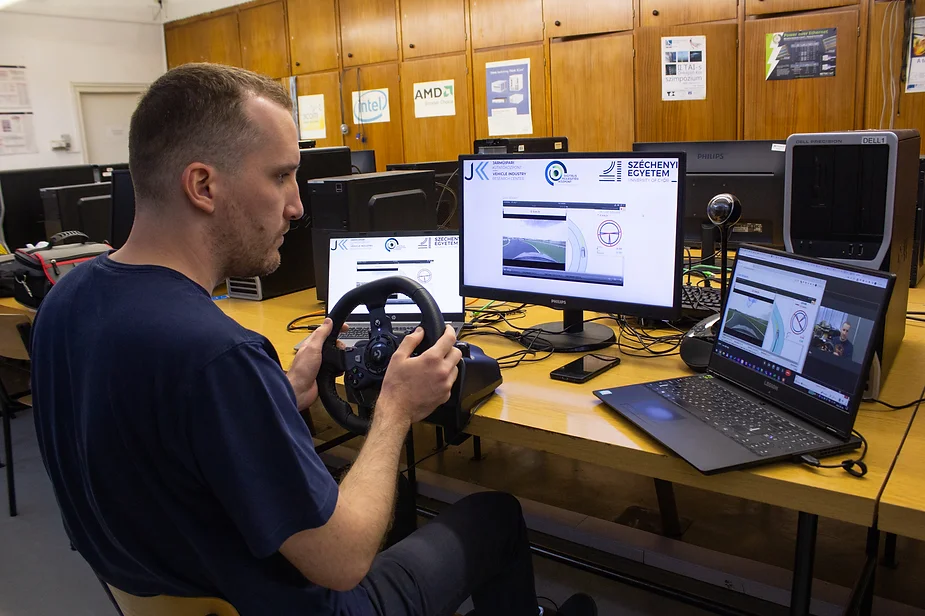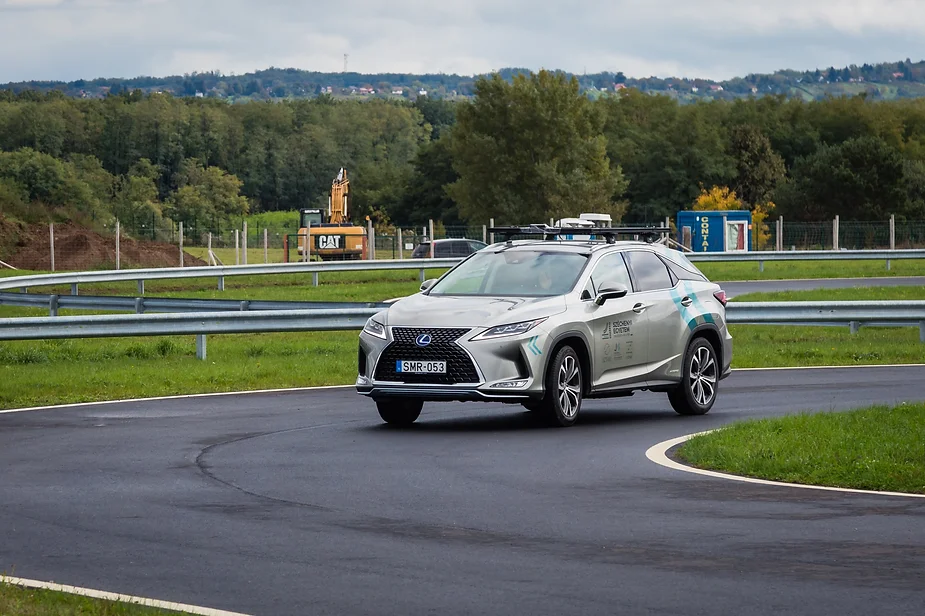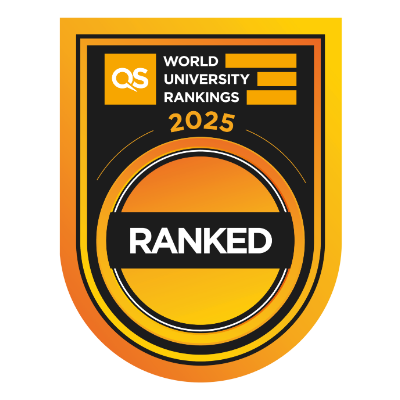Széchenyi University engineers controlled a car on ZalaZONE from Győr via 5G network
Széchenyi István University has reached a new milestone in the field of 5G applications and self-driving vehicle research. Engineers from Győr controlled a passenger car without a driver on the ZalaZONE test track in Zalaegerszeg using the 5G Campus mobile network provided by Magyar Telekom.
The 5G Campus mobile network has huge potential, and its exploitation depends heavily on research carried out at Széchenyi István University, known for its innovative approach. The institution is also a key player in the development of autonomous transport systems.
The spectacular results achieved in these two areas were illustrated by the demonstration held on 30 September 2022, during the IV ZalaZONE Innovation Day, during which the car, controlled by the development team from the Győr laboratory, advanced along the test track without a driver.
An interesting feature of a vehicle with sensors is that it cannot only be used to develop self-driving methods, but can also be remotely controlled. As in the Hungaroring demonstration on 23 September, network communication plays a key role in the improved solution now being demonstrated, as the car is in motion while the communication is taking place, i.e. it can travel several metres between the sensor signals and the reactions received. The response time was kept below 6 milliseconds on the radio section and around 10 milliseconds on the Zalaegerszeg-Győr section, for which Magyar Telekom's experts provided dedicated radio and core network resources on several 3.5 GHz cells using 5G technology. To do this, they used the previously presented 5G Campus mobile network slicing technology.
"The engineers accelerated a car weighing nearly two tonnes to 60 kilometres per hour and then, reducing the speed, drove the car along the winding asphalt of the ZalaZONE test track, as would happen in a typical urban traffic situation. This was achieved by the researchers and engineers by tuning the live network, rather than using specially installed network devices. For remote control and safe operation, stable network availability and the necessary resources such as data bandwidth and low latency are of paramount importance," said István Drotár, Head of the Centre for Digital Development at Széchenyi István University.
Direct control of the car was translated into so-called "CAN messages" by the on-board unit, which controlled the car based on commands received via the 5G Campus mobile network. At the same time, the image from the roof-mounted camera was transmitted with a small delay to the University in Győr, where the operator had full control of the car. The 'driver', sitting more than 100 kilometres away from the vehicle as the crow flies, was also assisted on a virtual track by visualisation of the data sent by the precision GPS system and its continuous feedback on the status of the steering angle and the pedals.


The car, in which the crew was there only for safety reasons, was driven by engineers from Győr on the winding asphalt of the ZalaZONE test track (Photos: Márton Horváth and Csaba József Májer)
"Széchenyi István University is becoming an increasingly important player in areas that are shaping the future, such as 5G networks or research into autonomous vehicles and transport systems. We also want to contribute to strengthening the competitiveness of the region and our country by developing cutting-edge technologies. We are delighted to have the support of excellent partners such as Magyar Telekom and its subsidiary T-Systems Hungary. I congratulate the developers on this great success", said Dr Bálint Filep, President of Széchenyi István University.
"We are proud that through joint measurements and work, researchers and engineers from Széchényi István University have taken it to the next level and demonstrated real remote car control through Telekom's 5G Campus mobile network. The broad applicability and flexible possibilities of the 5G network are demonstrated by the fact that Telekom's staff only needed to make software modifications and fine-tuning adjustments to the existing, installed 5G cells operating at 3.5 GHz to test the network at ZalaZONE. With the SIM cards, radio, core network and IP data transmission system, which were previously developed but modified based on the needs of the current demo, they were able to meet the two-way, low-latency and yet reliable network requirements of self-driving cars," said Dr István Taszner, Head of Magyar Telekom Mobile Access Tribe.











